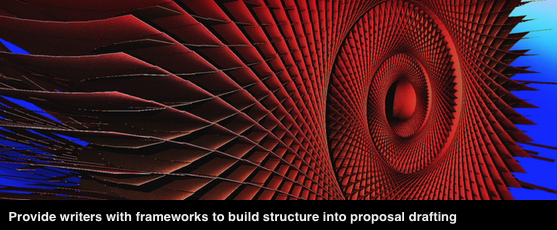A recent post showed how taking an information architecture approach makes proposals easier to read and score.
This and future posts explain how to operationalize this approach to achieve internal consistency in RFQs and RFPs.
Identify and group required content
As part of your pre-kick-off planning, identify RFP sections that lend themselves to a common structure. Obvious candidates include:
- Approaches and plans (e.g. design, construction, implementation (transition), operations and maintenance, customer service)
- Company profiles in joint ventures
- Project descriptions
- Key individual resumes
Build and populate frameworks
Analyse each section type and decide what information to present and in what order. Ensure your analysis accommodates the information and structure specified by the RFP. Obtain proposal leadership team agreement on the structure and content.
Create framework documents to capture draft content. Frameworks align in structure to the final proposal template but are much simpler. Use MS Word tables and populate with guidance and prompts as follows:
Approaches and plans: Create and customize a section content planner (SCP) for each section. Include the RFP question(s), win themes and links or contact information the writer may require. Provide an area and instructions for a bullet point analysis of the response. Provide an area for the response to each question and prompts (questions) that will produce the desired structure and information (see last week’s post on information architecture). Include prompts and space for suggestions on graphics, call outs and case studies.
Project sheets, resumes and JV partner profiles: Set up similar MS Word frameworks for these items that align with the RFP required information. Include a prompt in resume frameworks for the writer’s contact email and mobile number, so your editor can follow up directly with questions. For more, see this post on standardizing resumes and project sheets.
Document multi-use content
Avoid the common issue of gaps and inconsistencies in late drafts by identifying and collecting information likely to be used across multiple sections. Examples include facts supporting win theme, reference project facts, client reference information, organizational charts and performance measures (e.g. safety record, on-time and on-budget history, number of similar projects completed, number of staff with professional designations, etc.). Create, publish and update a database everyone can access.
Does this sound like a lot of work?
Setting up content frameworks and prompts takes upfront time and effort. But, in our experience, the downstream benefit of getting first draft content that is complete, compliant and responsive more than outweighs the cost.


